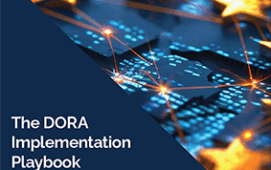
The financial services sector faces unprecedented scrutiny regarding communication record-keeping, a challenge amplified by evolving regulations and a proliferation of digital channels.
A recent webinar hosted by A-Team Group and sponsored by Wordwatch, brought together industry experts to dissect the complexities of managing legacy voice recording transitions and charting a course for future-proof compliance.
The discussions underscored a critical juncture for firms: either to persist in a reactive, costly cycle of managing outdated infrastructure or to strategically invest in agile, cloud-native solutions.
The Shifting Regulatory Landscape and its Demands
Recent enforcement actions from US regulators, specifically the SEC and CFTC, have sent a clear message, with over $2 billion in fines levied for off-channel communications, including platforms such as WhatsApp, iMessage, and Signal.
This demonstrates that US rules are far from lenient, aligning with the stringent mandates seen in the EU under MiFID II, which requires the recording of all telephone and e-communications intended to result in a transaction. As one panellist highlighted, a key strategic decision for multinational firms is whether to adopt the highest global compliance standard across the board or adhere to jurisdiction-specific rules.The scope of what constitutes a ‘recordable communication’ has expanded dramatically beyond traditional audio. The rise of platforms like Teams and Bloomberg Chat, alongside the increasing use of video conferencing, necessitates a broader capture strategy. ESMA has unequivocally clarified that video conferencing falls under the umbrella of capturable electronic communications.
This expansion means that “voice recording is not just the audio, it is the text, it is the other communication services,” as one speaker observed. Furthermore, market abuse regulation is increasingly driving a shift towards more automated surveillance approaches, moving away from manual processes.
The Operational and Financial Toll of Delaying Retirement
The webinar illuminated the significant financial and operational pain points associated with delaying the retirement of unsupported legacy recording systems. Non-compliance with regulations such as DORA, which mandates the governance of infrastructure and appliances, incurs substantial costs.
Older systems pose an elevated risk of data loss and system unavailability, leading to potential fines and operational disruption. They also offer less accurate data assurance concerning records, user identification, and metadata, complicating the reconstruction of communications. Critically, holding unnecessary data is not merely an inconvenience but an inherent risk and liability.A poll conducted during the webinar revealed that the principal obstacle preventing firms from decommissioning legacy recorders is a “fear of operational disruption,” cited by 40% of attendees, significantly outweighing budget constraints (23%) or uncertainty over regulatory expectations (17%). This highlights a paradox where the perceived risk of change often overshadows the demonstrable dangers of inertia.
Essential Risk Assessment for Decommissioning Legacy Platforms
Successfully transitioning from legacy systems demands meticulous planning and execution. Experts outlined a four-pronged risk assessment checklist for tech and compliance teams:
- Data Preservation: Firms must compile a full inventory of all record types (structured and unstructured), ascertain regulatory retention periods, and ensure new systems facilitate timely and quick playback and reproduction.
- Data Migration: Thorough reconciliation testing is paramount to ensure 100% data transfer. Crucially, to preserve authenticity and the chain of custody, data should ideally not be modified or transcoded during migration. As one panellist advised, “if you stop running around transcoding things, you do make your life extremely difficult to prove that nothing has changed”.
- User Readiness: Ensure surveillance users can seamlessly access and effectively utilise the new platform through clear training schedules and defined timelines for transition.
- Governance and Documentation: Obtaining appropriate sign-off from all relevant departments, including compliance, IT, security, legal, and audit, is vital. Detailed technical documentation of the migration process is indispensable for future reference and audit trails.
The Advantages of Modern Solutions and Future-Proofing
Modern, cloud-native solutions, combined with advancements in AI and speech-to-text analytics, offer compelling advantages. Cloud-native capture provides economies of scale and enables firms to experiment with on-demand solutions before making full commitments. AI-driven surveillance and speech-to-text analytics are “a massive gamechanger,” improving accuracy and significantly reducing false positives.
Regulators, such as the FCA, are increasingly transparent about their engagement with AI, signalling its growing acceptance and importance.
The “evergreen” approach inherent in cloud solutions eliminates the need for frequent, disruptive IT projects, offering continuous updates and predictable costs. For securing executive sponsorship and budget, arguments that resonate most include the high cost and distraction of managing legacy systems under regulations like DORA, alongside the inherent cybersecurity risks of unsupported systems. Furthermore, articulating the value proposition – how centralised data can be leveraged for business insights, flexibility, and new AI models – can turn a perceived “IT plumbing” project into a strategic investment.
Designing a future-proof recording estate roadmap means building an agnostic layer between the capture and upstream systems. This orchestration layer normalises data sets, allowing firms the flexibility to integrate new communication channels and future technologies without vendor lock-in or disruptive migrations. This “evergreen” approach ensures data governance is simplified, accommodating changes in codec standards by transcoding on the fly without altering original data, thereby preserving its integrity. A holistic view encompassing all records – voice, e-communications, and chat – is essential, focusing not only on data retrieval but also on the proof of data originality for regulators.
Conclusion: A Strategic Imperative
The webinar concluded with a strong call for firms to fundamentally rethink traditional operational approaches to voice recording, recognising that regulatory mandates are increasingly onerous and demand proactive evaluation. This transition is not the sole responsibility of a single department but necessitates multi-functional collaboration across compliance, IT, security, legal, and external vendors. Emphasis was placed on establishing robust governance and succession planning for data, ensuring that future custodians possess the necessary context for data management.
Ultimately, firms face a stark choice: either to contend with ever-increasing demands and costs in a struggle to control their data, or to invest strategically in flexible, cloud-based, vendor-agnostic platforms. The latter path offers the clear advantage of future-proofing compliance while simultaneously enhancing operational efficiency and unlocking the potential of valuable communication data. The era of passive compliance is over; a proactive, integrated data strategy is now a strategic imperative.
Subscribe to our newsletter




